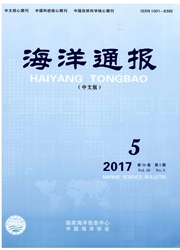

 中文摘要:
中文摘要:
根据江苏盐城自然保护区核心区两个时相陆地卫星影像资料的分析和对比,研究了10a内核心区的植被演替、人工开发及潮沟系统演化,探讨自然及人为因素对整个原生湿地生态系统的影响。分析结果表明,互花米草滩的面积10a间扩展了10倍以上,而作为珍禽的主要栖息地的盐蒿滩、草滩和芦苇滩的面积10a内均有所下降,其中草滩面积的下降尤为明显。10a间芦苇田和水禽湖这两种人工湿地的面积增长显著。潮沟系统呈减少和萎缩趋势,在一定程度上是海岸开发活动和互花米草盐沼扩展的结果。保护区核心区的原生生态系统已有退化迹象,珍禽的原生栖息地的面积有所下降,因此建议保护区将工作重点放在保护和重建原生湿地上。
 英文摘要:
英文摘要:
Based upon the analysis and comparison of two Landsat images of the core area of the Yancheng Natural Reserve, Jiangsu Province, the changes in vegetation, tidal creek system and coastal development patterns over the last 10 years are identified, which benefits an improved understanding of the natural and human factors that affect the coastal wetland ecosystem. The analytical results indicate that the total area of Spartina alterniflora coverage increased 10 times during the last l0 years. The main habitats of rare waterfowls, including the Suaeda salsa flats, grasslands and reed beds show a decreasing trend, with the most severe reduction of grasslands. Furthermore, the area of artificial wetlands, i.e., reed beds and waterfowl ponds, has increased. Finally, the tidal creek systems have changed, with a degenerating trend, which is partly caused by coastal development schemes and the extention of the Spartina alterniflora flats. The findings suggest that the original ecosystem is in the process of degeneration. For the environment protection of the Yancheng Natural Reserve, it is important to protect and reconstruct the original wetlands.
 同期刊论文项目
同期刊论文项目
 同项目期刊论文
同项目期刊论文
 期刊信息
期刊信息
